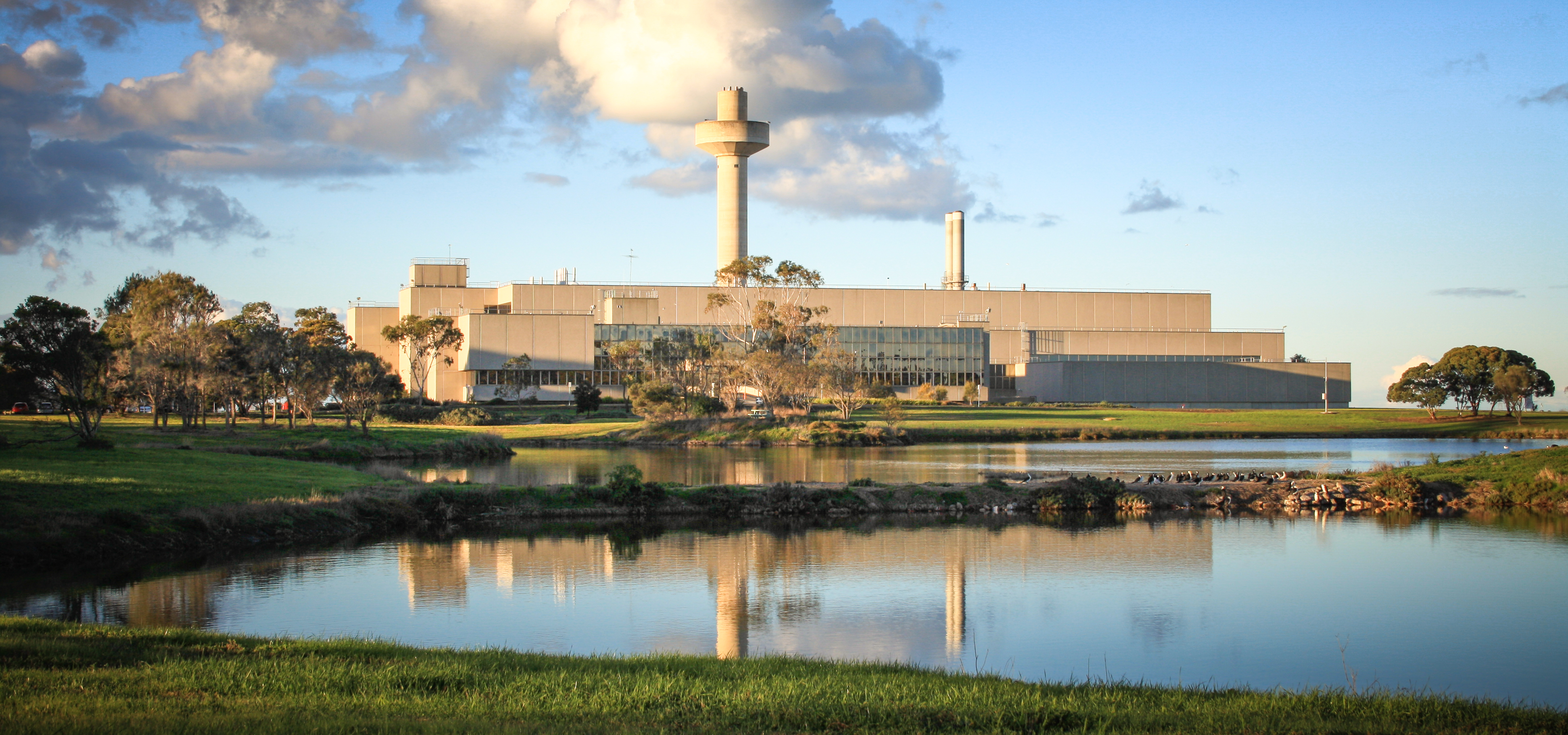The building of this national facility
In 1968, Bluetongue virus was detected in cattle in northern Australia, potentially exposing Australia's successful sheep and wool market to a biological threat that could devastate the industry.
Meanwhile discussions continued about how Australia would cope if Foot and Mouth Disease (FMD) were to be detected in Australia.
The then Prime Minister, Malcolm Fraser, signed a contract ordering the Australian Animal Health Laboratory (now called the Australian Centre for Disease Preparedness, ACDP) to be built.
ACDP (formerly AAHL) Foundation Chief, Dr Bill Snowdon, worked with the Federal Government to investigate a number of locations in Queensland, NSW, the ACT and Victoria before selecting this location in Geelong.
The East Geelong site was chosen based on a number of factors including the position of the site – conveniently surrounded by water and parkland on three sides and set well-back from the road, with relatively easy access to Melbourne.
Costing over $160 million, ACDP's construction required:
- more than 600 concrete piles
- 42000 cubic metres of reinforced concrete
- 2300 pre-cast concrete wall panels
- 520 air-lock doors
- 62 air-handling systems and 1000 high-efficiency air filters.
To replace ACDP today would cost more than $1.2 billion.

ACDP is a complicated structure. Developing and installing the sophisticated engineering systems to meet all of the microbiological security requirements was a massive undertaking.
At peak-time of construction there were more than 1100 workers on site.
ACDP was custom-built to ensure the containment of the most infectious agents known.
A guiding principle in the complex design of ACDP's high-biocontainment facility was that biocontainment should never rely on a single barrier.
If one containment system or barrier fails, then at least one other barrier is in place to prevent a breach of the system.
As a result, ACDP is regarded as one of the world's most sophisticated laboratories for the safe handling and containment of animal diseases.
ACDP's role
Before ACDP opened, most samples that needed to be tested for exotic animal disease were sent overseas for analysis.
This took considerable time and resulted in a loss of control over important trade-related information for Australia.
The establishment of ACDP meant exotic diseases could be diagnosed within Australia, providing protection and support for Australia's trade in the export of animal products and live animals.
Since opening, ACDP has supported Australian state veterinary laboratories by testing thousands of samples and has helped to detect and characterise many new viral diseases.
Our test results have provided continuing evidence of Australia's freedom from a range of diseases, and confirmed disease outbreaks, including avian influenza (bird flu), equine influenza and Newcastle disease.
The building of this national facility
In 1968, Bluetongue virus was detected in cattle in northern Australia, potentially exposing Australia's successful sheep and wool market to a biological threat that could devastate the industry.
Meanwhile discussions continued about how Australia would cope if Foot and Mouth Disease (FMD) were to be detected in Australia.
The then Prime Minister, Malcolm Fraser, signed a contract ordering the Australian Animal Health Laboratory (now called the Australian Centre for Disease Preparedness, ACDP) to be built.
ACDP (formerly AAHL) Foundation Chief, Dr Bill Snowdon, worked with the Federal Government to investigate a number of locations in Queensland, NSW, the ACT and Victoria before selecting this location in Geelong.
The East Geelong site was chosen based on a number of factors including the position of the site – conveniently surrounded by water and parkland on three sides and set well-back from the road, with relatively easy access to Melbourne.
Costing over $160 million, ACDP's construction required:
- more than 600 concrete piles
- 42000 cubic metres of reinforced concrete
- 2300 pre-cast concrete wall panels
- 520 air-lock doors
- 62 air-handling systems and 1000 high-efficiency air filters.
To replace ACDP today would cost more than $1.2 billion.
ACDP is a complicated structure. Developing and installing the sophisticated engineering systems to meet all of the microbiological security requirements was a massive undertaking.
At peak-time of construction there were more than 1100 workers on site.
ACDP was custom-built to ensure the containment of the most infectious agents known.
A guiding principle in the complex design of ACDP's high-biocontainment facility was that biocontainment should never rely on a single barrier.
If one containment system or barrier fails, then at least one other barrier is in place to prevent a breach of the system.
As a result, ACDP is regarded as one of the world's most sophisticated laboratories for the safe handling and containment of animal diseases.
ACDP's role
Before ACDP opened, most samples that needed to be tested for exotic animal disease were sent overseas for analysis.
This took considerable time and resulted in a loss of control over important trade-related information for Australia.
The establishment of ACDP meant exotic diseases could be diagnosed within Australia, providing protection and support for Australia's trade in the export of animal products and live animals.
Since opening, ACDP has supported Australian state veterinary laboratories by testing thousands of samples and has helped to detect and characterise many new viral diseases.
Our test results have provided continuing evidence of Australia's freedom from a range of diseases, and confirmed disease outbreaks, including avian influenza (bird flu), equine influenza and Newcastle disease.
